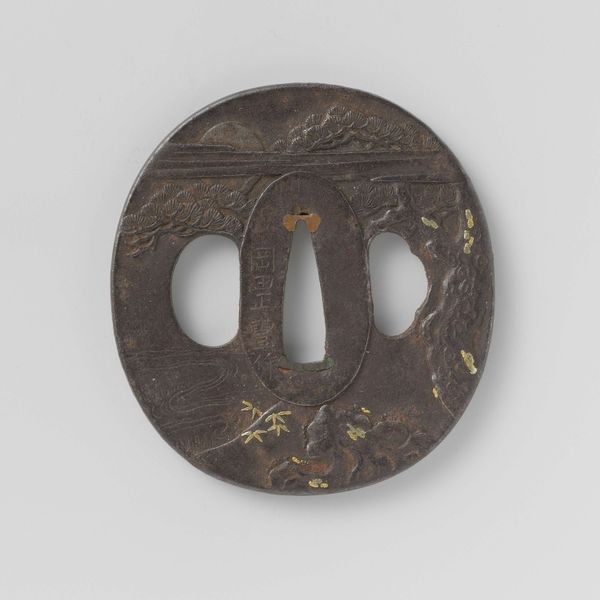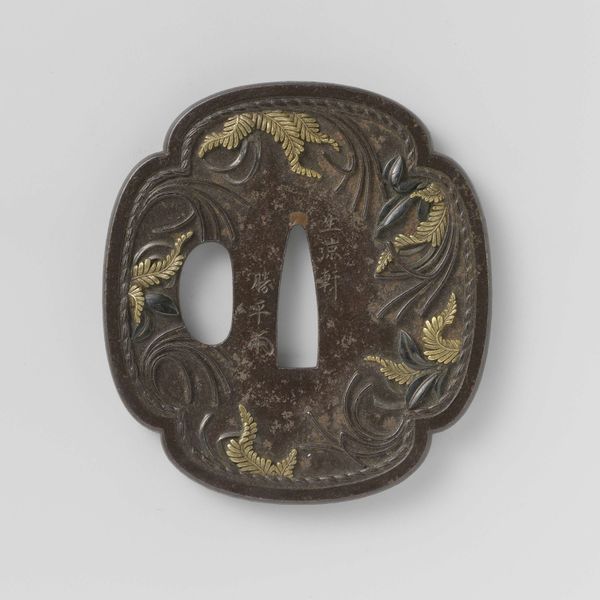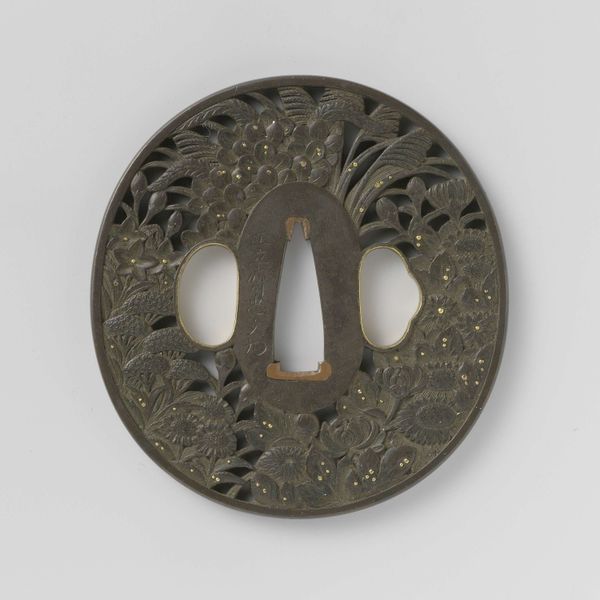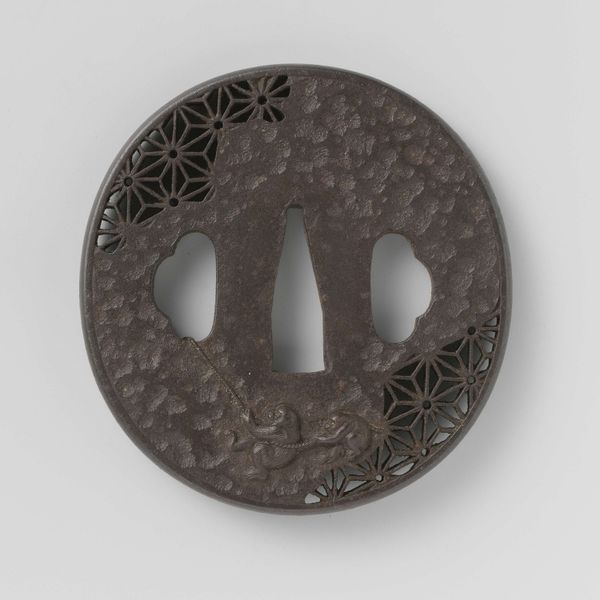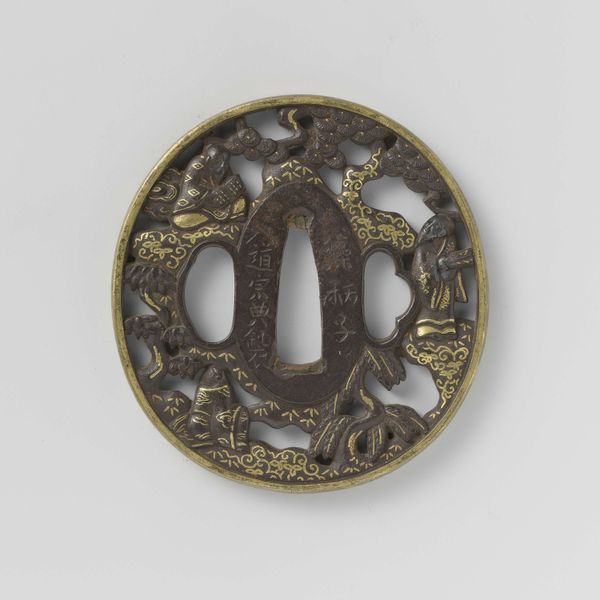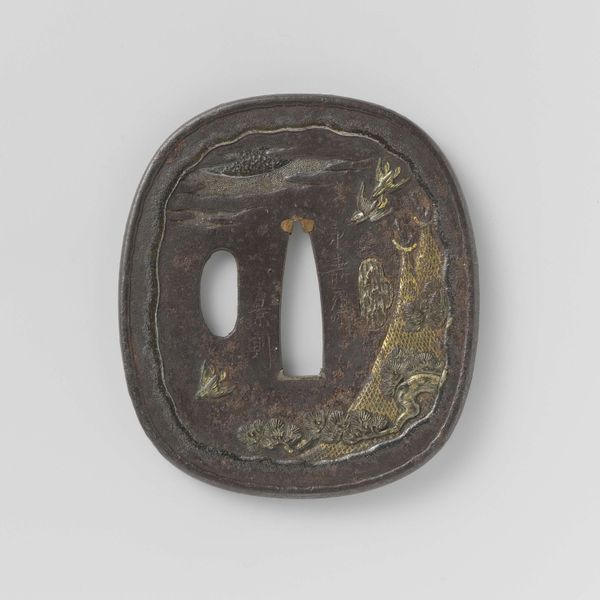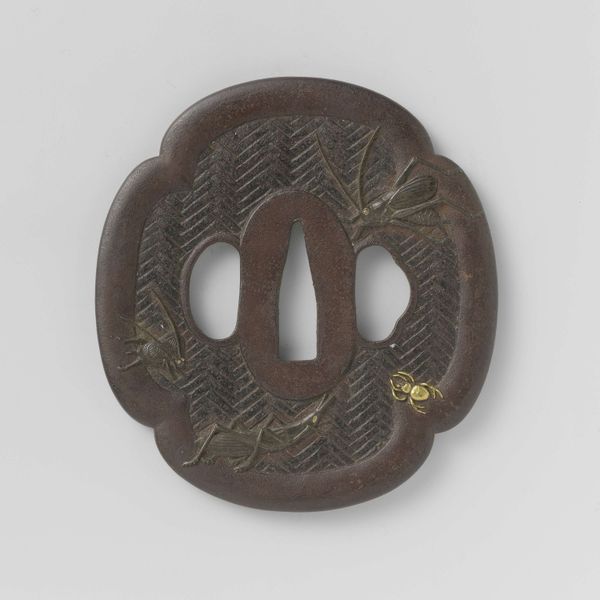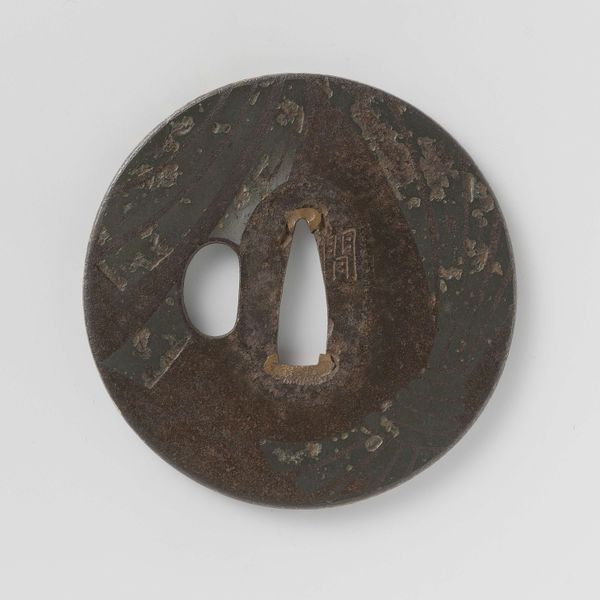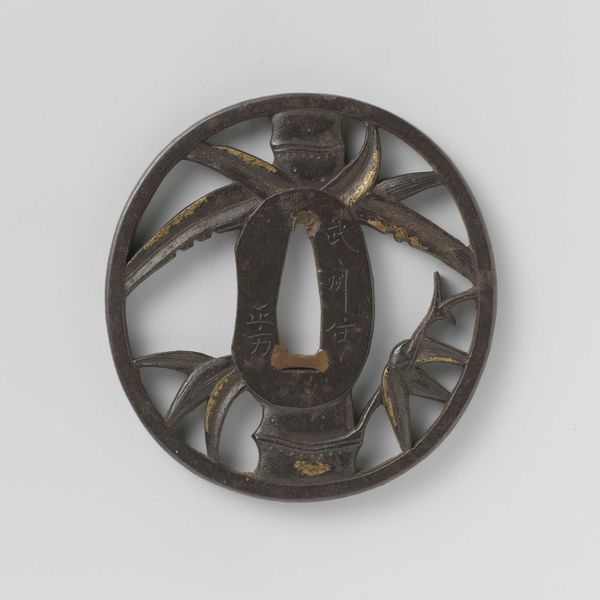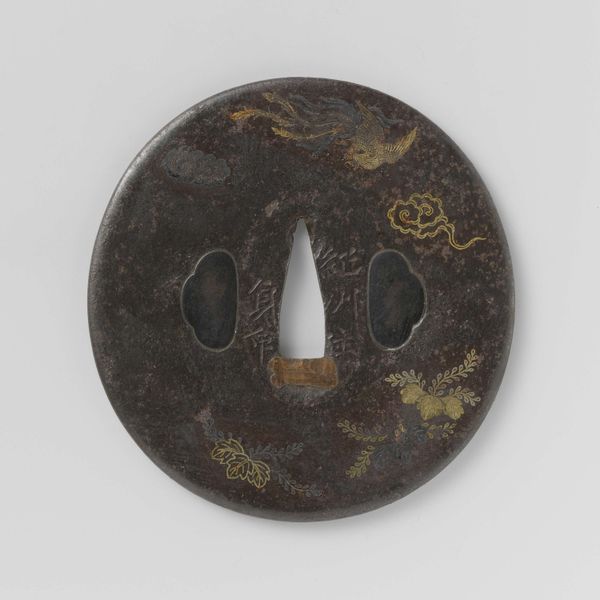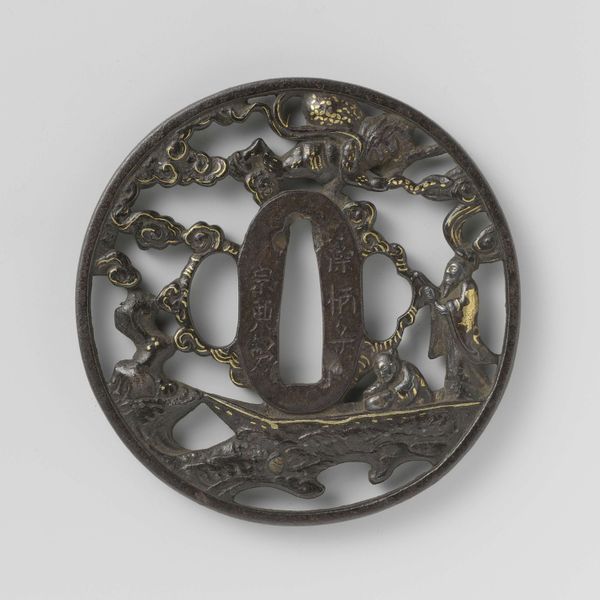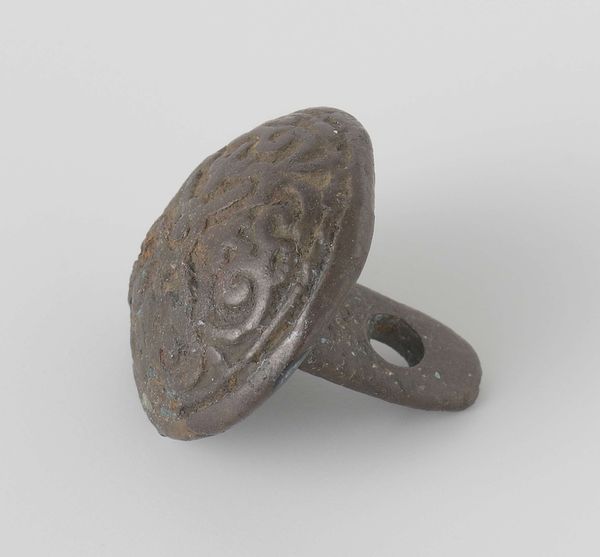
metal, relief
#
metal
#
asian-art
#
relief
#
ukiyo-e
#
geometric
#
decorative-art
Dimensions: height 7.6 cm, width 7.2 cm
Copyright: Rijks Museum: Open Domain
This is a hand guard or "tsuba" with cherry blossom and rafts, made from iron by Ito Masatsune. Though undated, it’s likely from the Edo period in Japan, a time of relative peace under the Tokugawa shogunate. Note how the rafts and blossoms are not merely decorative. The cherry blossom, or sakura, is a potent symbol in Japanese culture, representing the fleeting nature of life, something keenly felt by the samurai class. Rafts, on the other hand, suggest travel, perhaps a reference to the journeys warriors undertook or even the uncertain course of life itself. The tsuba was more than just a functional object. It was a canvas for expressing personal identity, taste, and even philosophical beliefs. Studying pieces like this offers insights into the values and aesthetics of the samurai class during a transformative period in Japanese history. By researching historical records and material culture, we can start to understand the complex interplay between art, society, and individual expression.
Comments
No comments
Be the first to comment and join the conversation on the ultimate creative platform.
